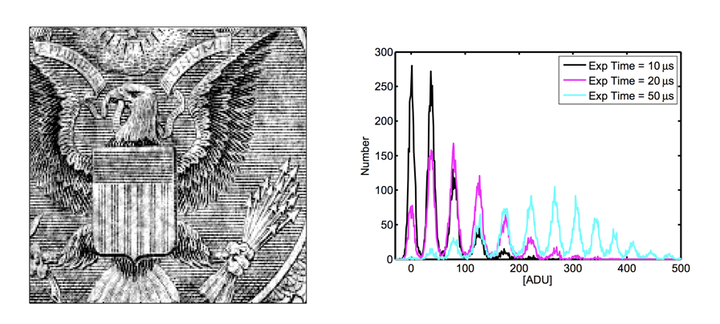X-ray tests of a pixel array detector for coherent x-ray imaging at the Linac Coherent Light Source

Abstract
Test results are presented of a pixel array detector (PAD) developed for x-ray imaging at the Stanford Linear Coherent Light Source (LCLS). The basic module of the PAD consists of two bump-bonded chips: a reverse-biased silicon diode chip of 185 × 194 pixels, each of which is coupled by bump-bonds to a charge integrating CMOS ASIC with digitization in each pixel. The LCLS experiment requires a high signal-to-noise ratio for detection of single 8keV x-rays, a pixel full-well exceeding 1,000 8keV x-rays, a frame-rate of 120Hz, and the ability to handle the arrival of thousands of x-rays per pixel in tens of femtoseconds. Measurements have verified a pixel full-well value of 2,700 8keV x-rays. Single 8keV photon detection has been shown with a signal-to-noise ratio of > 6. Line-spread response measurements confirmed charge spreading to be limited to nearest neighbor pixels. Modules still functioned after dosages up to 75Mrad(Si) at the detector face. Work is proceeding to incorporate an array of modules into a large-area detector.